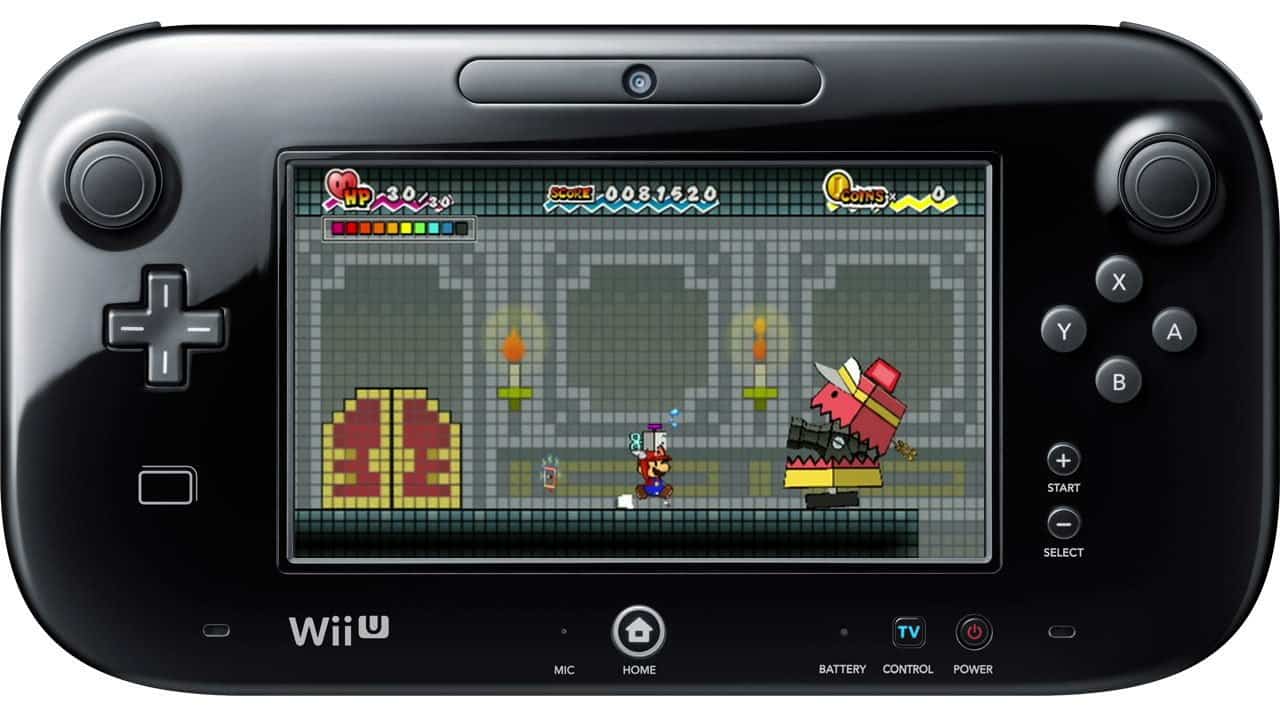You can trust VideoGamer. Our team of gaming experts spend hours testing and reviewing the latest games, to ensure you're reading the most comprehensive guide possible. Rest assured, all imagery and advice is unique and original. Check out how we test and review games here
The original Paper Mario, released in 2001 on the N64, met critical and commercial success with its blend of RPG elements and visual style akin to that of the original 2D Mario games, and later spawned an equally impressive sequel for the GameCube in 2004. But don’t be fooled, Super Paper Mario may bear its fair share of similarities with its brothers, both visually and, in some ways, mechanically, but it also remains an entirely different experience all together.
For one, the RPG elements have been, for the most part, nixed, in favour of a more platforming friendly adventure. You still gain experience, level up and learn new attacks, but it’s the way in which you progress in the game that breaks the tradition. Turn-based battles have been replaced altogether, with Nintendo opting for a real-time approach to the action to keep the game’s flow in check without interruption. To attack, for example, simply jump on the enemy. Shake the controller a bit immediately after landing on your foe and you’ll earn bonus experience points that are added to your overall score. Admittedly, shaking the remote after taking care of business can grow a bit tiresome, and although the bonus points are helpful in levelling up your character, the entire process feels tacked on for the sake of incorporating motion sensing control, rather than enhancing the way the game is played.
Rest assured, despite this minor caveat, Super Paper Mario played as well as one can hope and offered an intuitive, albeit simplistic, control scheme to guide Mario and friends from one stage to the next. The controller itself is held in the classic position, so no nunchuck is required, while character movement is assigned to the d-pad. The 1 button is used to jump, while the 2 button is used to activate pixis and their corresponding special moves, be it dropping bombs to blast through walls or further thinning your character to fit through smaller crevices. The + button on the other hand is used to bring up the menu screen where you can manage your inventory, choose pixis and select your character. All in all, Super Paper Mario features two additional characters along with the classic plumber: Bowser and Peach.
Unlike Bowser, Peach was selectable right from the get-go, and fans of Mario Bros. 2 will be especially pleased to know that her hovering ability has indeed returned. By pressing and holding the 1 button, Peach can glide over gaps to reach areas and items inaccessible to other party members.
But perhaps the most significant addition to the game comes in the form of the A button. Give it a press and your 2D character will instantly be transported into a 3D world – a mechanic that is absolutely necessary to solve many of the game’s clever puzzles, and to unearth hidden coin boxes and item chests. So, you may start the level in 2D, but find yourself having to change between perspectives from time-to-time to progress onward. For example, in one dungeon-like level, a door was suspended over a gap with platforms to the left and right of it. At first glance, there seemed to be no apparent solution to the puzzle. But after further investigation, and with a quick tap of the A button, a hidden ladder was revealed that lead up to a separate section of the area, where you can press a switch, fill the gap, leap back down and enter the door.
Similarly, there was a level where Mario found himself jogging up a steep cliffside with a handful of thwomp-like boulders heading directly towards him. Stay in 2D and Mario’s kaput; enter 3D, however, and you can navigate around the cliff’s many dangers with ease. In another situation, poor Mario was walking on a bridge in 2D. Thinking that there may be a hidden item lurking about, I pressed A and switched to 3D, in which I realized that the bridge was in reality, paper thin, and only possible to cross in 2D. Needless to say, Mario was the one who took the fall.
In a particularly cool nod to the classic Mario games, and in a section of the game that bore a striking resemblance to the first level in the original Mario Bros., Mario acquired a star that enlarged him to epic, pixelated proportions, where he was able to smash his way through the entire level unharmed. The event drew the types of ‘ohs’ and ‘ahs’ from the crowd that I haven’t heard since witnessing the reactions of a few dozen onlookers who were observing Mario 64 for the very first time.
Stylistically, as you can no doubt tell from the above paragraph, Super Paper Mario is a real treat, both in its clever design, and overall visual polish. If you’ve glanced at any of the screen shots or watched a few videos for that matter, I doubt you’ll disagree. Better yet, the game supports widescreen and progressive scan options.
I must confess, I was a little taken-aback by the game’s transition into platforming territory over its RPG-focused brothers, likely because I’m patiently awaiting a true sequel to Mario RPG and have had my platforming fix with the New Super Mario Bros on the DS. Either way, after spending even 15 minutes with the title, Super Paper Mario is bound to win over even the biggest sceptics and should have fans salivating at the mouth.
/https://oimg.videogamer.com/images/9001/super_paper_mario_21-35600.jpg)






